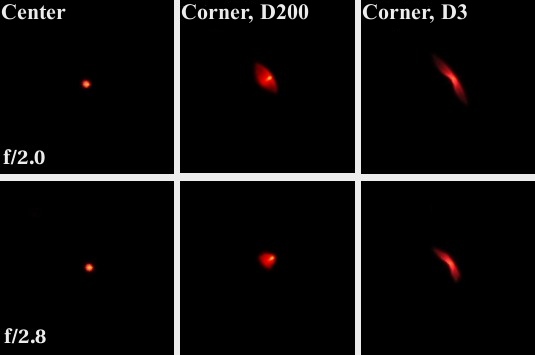Nikon Nikkor AF 35 mm f/2D
7. Coma and astigmatism
Please Support UsIf you enjoy our reviews and articles, and you want us to continue our work please, support our website by donating through PayPal. The funds are going to be used for paying our editorial team, renting servers, and equipping our testing studio; only that way we will be able to continue providing you interesting content for free. |
- - - - - - - - - - - - - - - - - - - - - - - - - - - - - - - - - - - - - - - - - - - - - - - -
In this chapter, we encounter the first serious slip-up of the tested lens. Coma at the maximum relative aperture is very significant, both for the DX and the FX frame corner. On stopping down the situation becomes better for the DX, although coma is still visible, but it doesn’t ameliorates for the full frame. The pictures below prove that you can’t obtain sharp area edges by f/2.0 and f/2.8 when the off-axis aberrations can make such a “comma” from a circular diode picture.

Fortunately, in the case of astigmatism the situation is quite different. In lenses, where the elements don’t change their reciprocal positions, the level of this aberration is rarely high and here we can see exactly this case. The average difference between the vertical and horizontal MTF50 values was just 3%.






